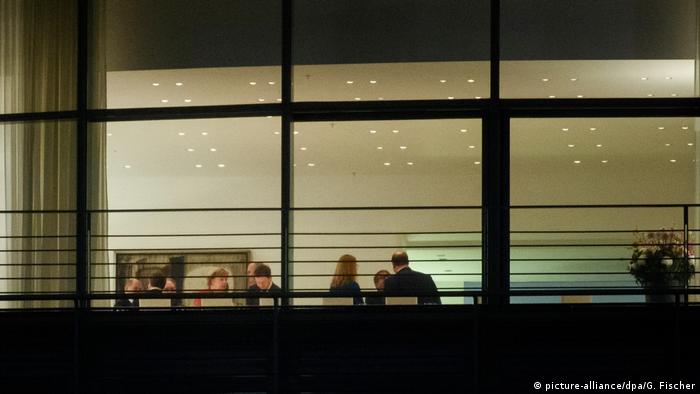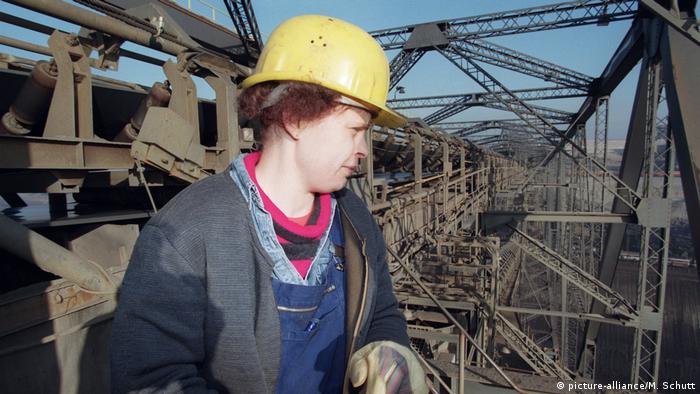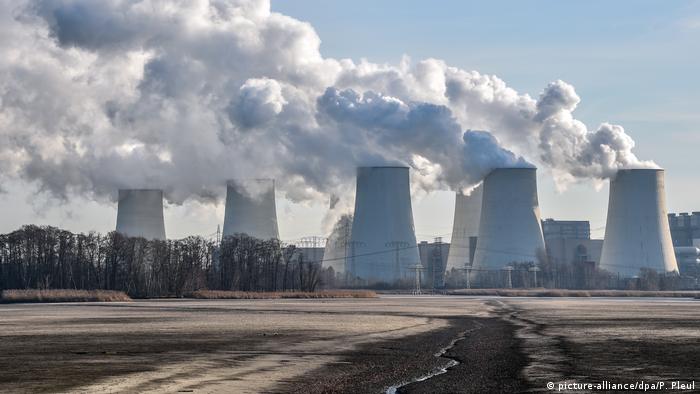Coal energy in Germany have no future. But when exactly will the conclusion be? To be arguing about for some time bitterly. For too long, the Chancellor. From Berlin, Sabine Kinkartz.

A long evening in the Chancellery: The exit strategy from Coal, there are still a lot of unanswered questions
Four Prime Ministers, four Federal Ministers and the four chairmen of the government-appointed Commission to develop a roadmap for the Coal phase-out, had invited Angela Merkel to dinner. While outside in front of the Chancellery, a protector of the climate for a faster exit strategy from Coal drummed, was inside debating. When, where, and in what order, coal-fired power plants are to be closed? How long is to be mined in Germany, brown coal and what it will cost to create in the mining regions of new Jobs?
Questions that should already be in December clarified. Instead, it is always argued hotly. What is clear is that After the end of the coal industry, also the mining of brown coal is a discontinued model. Still it exists in North Rhine-Westphalia and the Eastern German States of Brandenburg, Saxony and Saxony-Anhalt. Currently, nearly a quarter of the electricity in Germany is produced from brown coal. It is expected the stone charcoal kilns, it is even more than a third. However, it is relatively much climate-damaging CO2. With a view on the climate balance that is not more portable.
The coal Commission to fix it
In June 2018, the Federal government has set up a Commission to elaborate a roadmap for the phase-out of coal energy. “Commission on growth, structural change and employment” is the name of the Committee officially, and thus points to the fact that it goes for the policy, especially the regional economic consequences of the phase-out cushion. “It is not a question to decide First any exit data, but rather to give people hope, to give future, structural change really prepare,” said the Chancellor in November last year.
Since the Commission had just made its first proposals, and the were actually in front of all the exit data. Until 2022, thereafter, the first coal-fired power plants should be shut down. Both hard coal and brown coal power plants,but all in the West of the Republic. By 2030, the Bulk of the remaining power plants should follow, then, the brown coal areas in the East of the Republic. There, in 2035, it should be.
The fronts are hardened
Immediately there was a dispute. While it is not environmentalists quickly enough to warn of economic associations of hasty closures, rising electricity prices and thus cost Billions. Politicians in the affected regions, and trade unions are concerned, however, the fate of the affected workers. Just to 21,000 Jobs are directly affected, including tens of thousands of jobs in the environment of the mine.
What was in the old Federal Republic, hard coal, brown was in the GDR coal. Alone in the Lausitz region of 80,000 people in mining were employed. Today, there are still 8000. You don’t want to lose their jobs, especially as the Lausitz today is what is called structurally weak. Appreciable economic power has not the Region.

The brown coal is, as here, in the North-East of Saxony, is a real economic factor
What comes after money?
Similarly, in the Central German area. It’s no wonder that the East German Minister-President to fight back strongly against a quick exit from the brown coal. “A second radical structural change, with high unemployment, such as after the turn, you can’t expect of the people”, said the CDU-politician and Minister-President of Saxony-Anhalt, Reiner Haseloff and his colleagues from Brandenburg and Saxony, Dietmar Woidke (SPD), and Michael Kretschmer (CDU) on his side.
A study conducted by the Leibnitz Institute for economic research in Halle (IWH) is the Prime Minister right. The carbon will have on all affected areas “significant economic consequences”, especially the Lausitz hit hard, so IWH-Vice-President Oliver repeated möller. The unemployment rate will rise more sharply than in the other areas, and the average gross wage will decrease the most significantly. Up to 2,500 people could move away because of better job prospects from the Lausitz.
Gloomy prospects in the East
The model calculation from hall a exit up to the year 2035. This final date is also the preferred option of a majority of the coal Commission. Woidke, Haseloff and Kretschmer did not ensure that the exit to the East before 2040. Most of the permits for lignite mining from running anyway.

Germany’s largest lignite-fired power plant in the Lausitz
The political and economic concerns of the Prime Minister in the Chancellor quite a sympathetic ear. The Federal government and the countries of the provide full views of the fall unites, when in Saxony and Brandenburg Landtag elections are held. In both countries, the AfD is very strong. The Coal phase-out and its consequences is likely to be a hot election issue, as the right-wing populists pushing to promote for so long for coal to use, how Occur there are.
EUR 60 billion for new Jobs
To be able to alternative prospects for the future, calling for the Prime Minister’s high level of financial compensation. 60 billion euros will flow for the building of a new infrastructure and new Jobs in the country. No surprise, then, that at dinner in the Chancellery of the Federal Minister of Finance was sitting at the table. Olaf Scholz and his cash are in demand for coal exit already. Because the energy producers are closing their power plants without financial compensation. In the coal Commission, it is assumed that per mothballed megawatts of power to 600,000 euros in compensation are incurred. Overall, the speech is of around three billion euros.